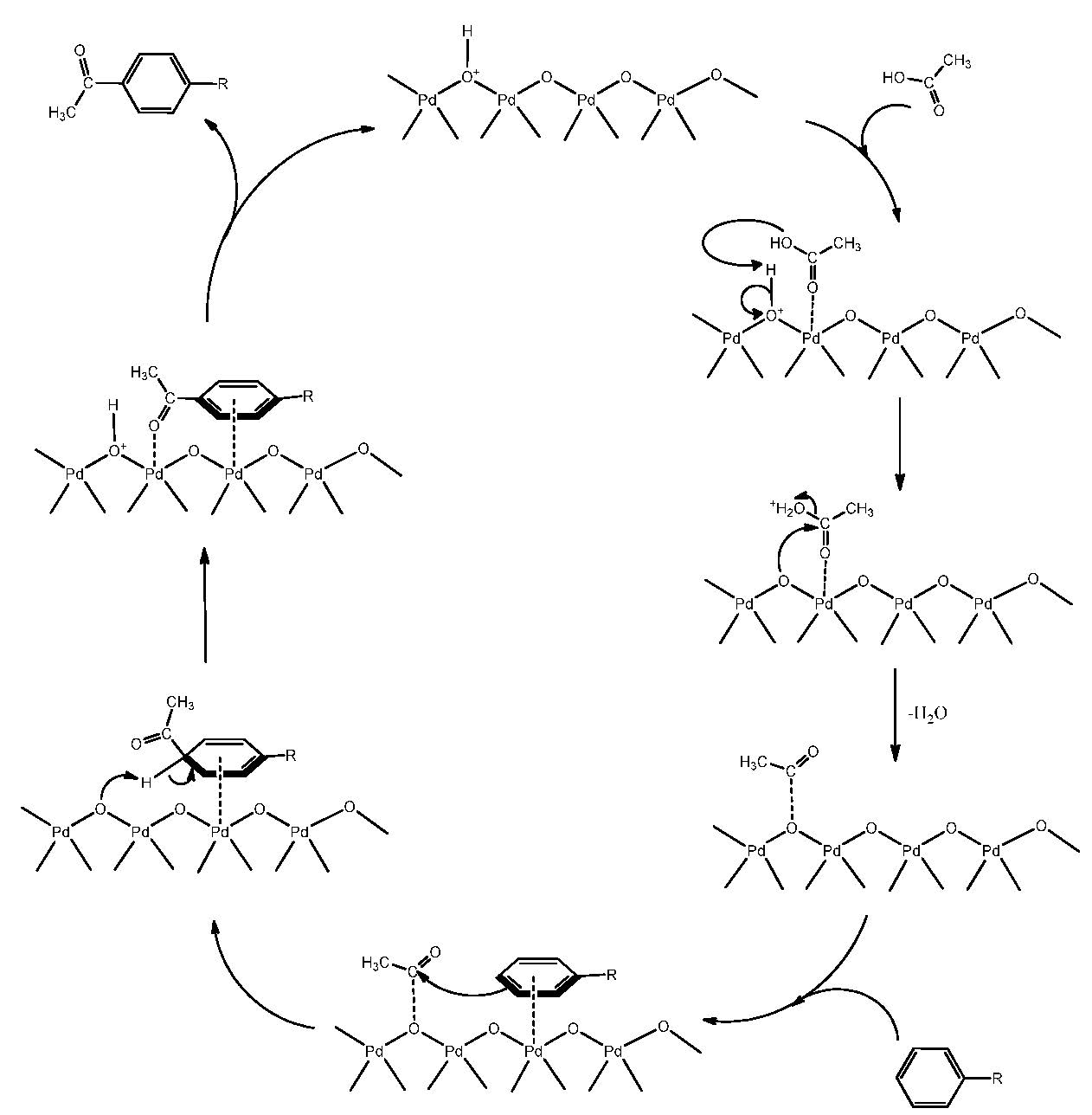Catalyst material plays a pivotal role in the pharmaceutical industry process. Among them, Friedel-Craft acylation reaction is a well-known reaction to synthesis acetophenone derivatives. However, Friedel-Craft acylation mostly used acetyl chloride as starting material with Lewis acid as homogeneous catalyst, which is nonenvironmental friendly process. In this work, a simple and efficient Friedel-Craft acylation reaction is reported by using the palladium oxide doped on activated bentonite (PdOAB) as the heterogeneous catalyst. The PdOAB catalyst material was characterized with scanning electron microscopy-energy dispersive X-ray (SEM-EDX), nitrogen isotherm adsorption, Fourier transform infrared (FTIR), X-ray powder diffraction (XRD), and thermogravimetric-differential thermal analysis (TG-DTA). The acetophenone derivatives with R = -H, -Cl, -CH3, -OCH3, -OH and -NH2 at para position were successfully synthesized from its corresponding aromatic compounds with glacial acetic acid in 86.6, 7.9, 91.7, 86.6, 82.7, and 78.9% yield, respectively. Therefore, a green method was established because the byproduct is water and the catalyst material can be recovered. Furthermore, the substituent (σ) constants were obtained by using Hammet equation, and the catalysis mechanism has been proposed.

